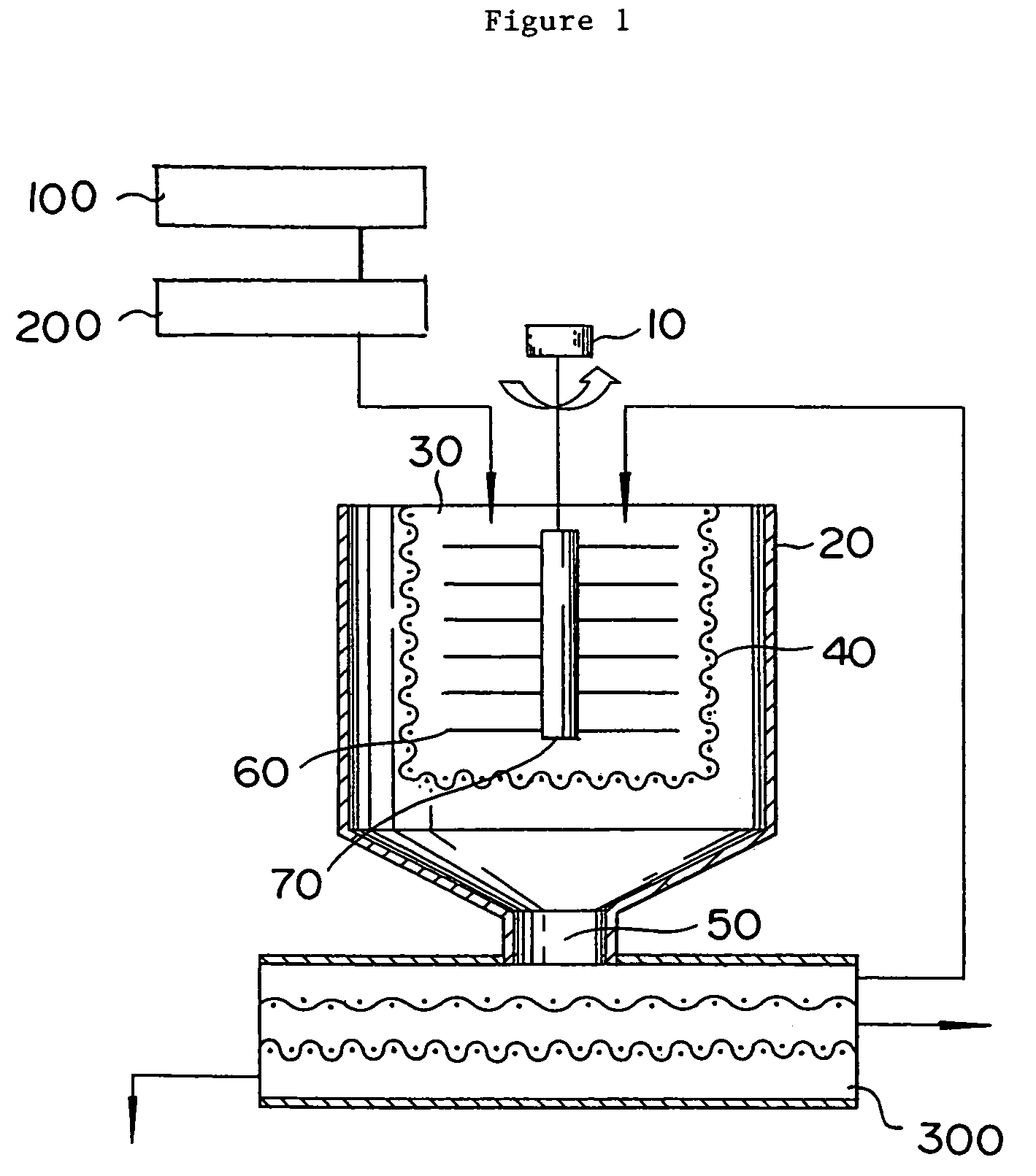Method for sizing of water-absorbent resin
a technology of water-absorbent resin and particle sizing, which is applied in the direction of other chemical processes, grain treatment, coatings, etc., can solve the problems of reducing the absorption capacity under pressure and the surface of the surface thereof, and achieve the effect of preventing the production of disposable diapers and ensuring quality
- Summary
- Abstract
- Description
- Claims
- Application Information
AI Technical Summary
Benefits of technology
Problems solved by technology
Method used
Image
Examples
example 1
[0090]In a kneader provided with two sigma type blades, an aqueous monomer solution comprising sodium acrylate, acrylic acid, and water and having a monomer concentration of 38 wt. % and a neutralization ratio of 75 mol % was prepared and polyethylene glycol diacrylate (having an average ethylene glycol unit number: 9) was dissolved as an internal cross-linking agent in the aqueous monomer solution till a concentration of 0.03 mol % (relative to the monomer). Then, nitrogen gas was blown into the aqueous monomer solution so as to lower the dissolved oxygen in the aqueous monomer solution and, at the same time, displace the whole interior of the reactor with nitrogen. Subsequently, sodium persulfate and L-ascorbic acid were added each as a polymerization initiator till respective concentrations of 0.12 g / mol (relative to the monomer) and 0.005 g / mol (relative to the monomer) while the two sigma type blades were kept in rotation. When the polymerization temperature reached 50° C., the...
example 2
[0105]The cooled water-absorbent resin (1) obtained in Example 1 was classified with sieves having mesh sizes of 850 μm and 150 μm. The water-absorbent resin which had not passed the sieve of 150 μm was transferred by pneumatic conveyance to a hopper and used therein to fill packs and obtain a product (2).
[0106]The water-absorbent resin which had not passed the sieve of 850 μm was introduced into the disintegrating device and then classified again with sieves of mesh sizes of 850 μm and 150 μm. The water-absorbent resin which had passed the sieve of 150 μm was removed.
[0107]The product (2) was found to have the absorption capacity of 36 (g / g) and the absorption capacity under pressure of 25 (g / g) and contain 0.3% of fine powder having particle diameters of not more than 150 μm.
example 3
[0112]The pneumatically conveyed water-absorbent resin in Comparative Example 2 was classified with a sieve of 150 μm immediately before it was introduced into the hopper. The fragments retained on the sieve were placed in the hopper and used therein to fill packs and obtain a product (3). The fine powder which had passed the sieve was removed.
[0113]The product (3) was found to have the absorption capacity of 30 (g / g) and the absorption capacity under pressure of 24 (g / g) and contain 0.1% of fine powder having particle diameters of not more than 150 μm. While the product for comparison (2) formed fine powder during the course of pneumatic conveyance, the product (3) formed fine powder in a smaller amount than the product for comparison (2) because it was classified after the pneumatic conveyance to remove the fine powder.
PUM
| Property | Measurement | Unit |
|---|---|---|
| particle diameter | aaaaa | aaaaa |
| size | aaaaa | aaaaa |
| particle diameter | aaaaa | aaaaa |
Abstract
Description
Claims
Application Information
 Login to View More
Login to View More - R&D
- Intellectual Property
- Life Sciences
- Materials
- Tech Scout
- Unparalleled Data Quality
- Higher Quality Content
- 60% Fewer Hallucinations
Browse by: Latest US Patents, China's latest patents, Technical Efficacy Thesaurus, Application Domain, Technology Topic, Popular Technical Reports.
© 2025 PatSnap. All rights reserved.Legal|Privacy policy|Modern Slavery Act Transparency Statement|Sitemap|About US| Contact US: help@patsnap.com

